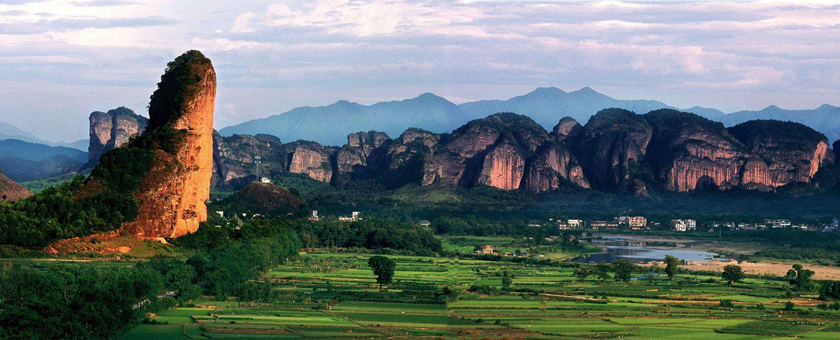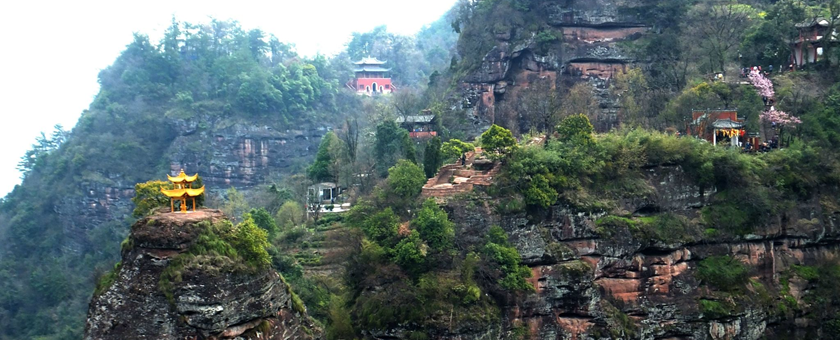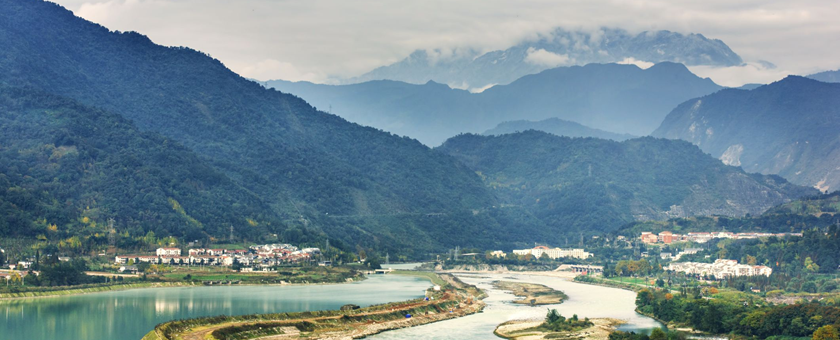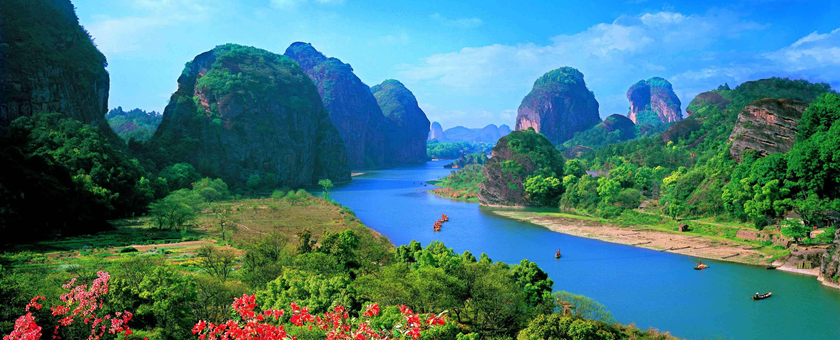Four Famous Taoist Mountains
Taoism is the indigenous religion of China. Zhang Dao Ling was first created in Heming Mountain in Sichuan during the reign of Emperor Shun of the Eastern Han Dynasty, and became popular in the Northern and Southern Dynasties. The four famous mountains began to build monasteries in the eastern Han Dynasty and continued to the late Qing Dynasty. After the founding of the People's Republic of China, it was protected by the state and repaired, becoming famous at home and abroad religious, tourist attractions. The four famous Taoist mountains in China are: Qiyun Mountain in Anhui Province, Wudang Mountain in Hubei Province, Qingcheng Mountain in Sichuan Province, and Longhu Mountain in Jiangxi Province. These are the holy lands of Taoism in China. The four mountains respectively enshrine Guangaipu Tianzun, Zhenwu Dadi emperor, Moral Tianzun, and Hudao Tianzun.

Bai Yue Xian Concept - Qiyun Mountain
Qiyun Mountain is one of the four famous Taoist mountains in China (one of the five famous mountains), the mainstream of Taoism in the world - Quanzhen Taoist holy land, known as Bai Yue, Yun Yue. Located about 15 kilometers to the west of Xiu Ning County, Huizhou City, Jiangxi Province, Qiyunyan is famous for its deep and mysterious risks. Yousheng Zhen Wu temple became the center of Taoism as early as Tang Dynasty. Since then, many buildings have been destroyed due to years of disrepair and continuous fire and war. The existing palaces and pavilions of more than 10, are rebuilt, as one of the famous Taoist mountains, is the main place of Taoist activities in Anhui Province and the famous scenic area.

Mysterious and Ethereal--Wudang Mountain
Wudang Mountain, the holy place of Taoism, is located in the northwest of Shiyan City, Danjiangkou City, Hubei Province. Wudang Mountain is also known as Taihe Mountain, Xie Luo Mountain, Fairy Mountain. Song Dynasty calligrapher Mi Fu once praised Wudang as "the best mountain in the world". In the Ming Dynasty, Wudang Mountain was granted the title of "great mountain" by the emperor, and was regarded as the supreme "Royal Family Temple". Wudang Mountain is famous for its "crown of the five mountains". Wudang Kungfu is an important school of Chinese Kungfu. Wudang Mountain is one of the world cultural heritage sites announced by the United Nations. It is one of China's national key scenic spots and AAAAA level scenic spots.

Secluded Fairyland -- Mount Qingcheng
Qingcheng Mountain, the holy land of Quanzhen Taoism, the world natural heritage (Sichuan panda inhabitated area), one of the four famous Taoist mountains in China, the national key cultural relic protection unit, the national key scenic spot, the national AAAAA level tourist attraction. Qingcheng is 68 kilometers away from Chengdu City, 10 kilometers southwest of Dujiangyan. Dujiangyan and Qingcheng Mountain have a long history and is one of the birthplace of Taoism in China. It has been more than two thousand years since the Eastern Han Dynasty. In 143, the "heavenly master" Zhang Ling came to Qingcheng Mountain, selected Qingcheng Mountain to preach, thus becaming the birthplace of Taoism and the ancestral mountain of Tianshi Dao. All over the country successive Tianshi have come to Qingcheng Mountain to worship ancestral court. Qingcheng Mountain has many scenic spots and historic sites andancient buildings have their own characteristics. There are beautiful scenery and magical legends. Qingcheng Mountain is also known as "the fifth mountain in the world".

Bishui Danya – Longhu Mountain
Longhu Mountain, is located in 20 kilometers southwest of Yingtan City, Guixi City, Jiangxi Province. In the middle of the Eastern Han Dynasty, Zhang Dao Ling, founder of Zhengyi Dao, had an alchemy here. Tianmen Mountain is the highest with an elevation of 1300 meters. Longhu Mountain is the eighth world natural heritage site in China, a world geological park, a national natural and cultural heritage site, a national AAAAA level tourist attraction, and a national key cultural relic protection site. Longhu Mountain is a typical Danxia landform in China and the birthplace of Taoism in China. In its heyday, Longhu Mountain had more than 80 Taoist temples, 36 monasteries and several Taoist palaces. It was a veritable "Taoist Capital" and the world kingdom of Taoist priests. Located 20 kilometers to the south of the city, Longhu Mountain, described in the beginning of the novel, is the birthplace of Taoism and the home of Taoist founder Zhang Dao Ling, known as "the first Taoist mountain in China". On August 2, 2010, Longhu Mountain was listed as the eighth world natural heritage site in China.


 Flow us
Flow us

